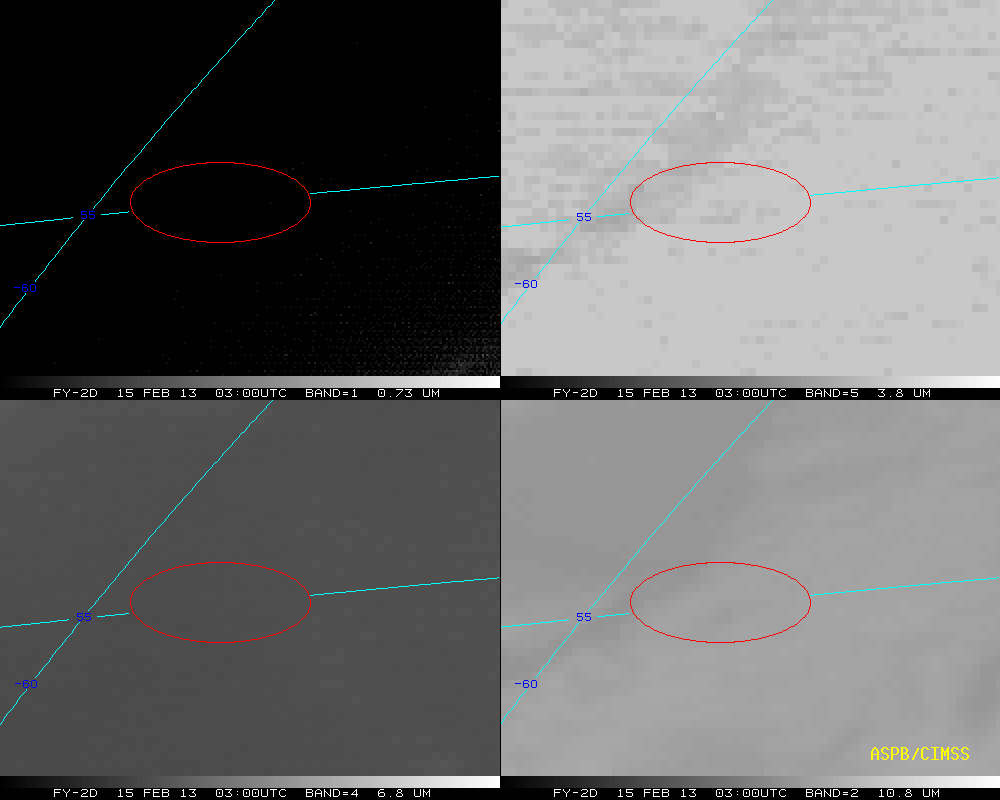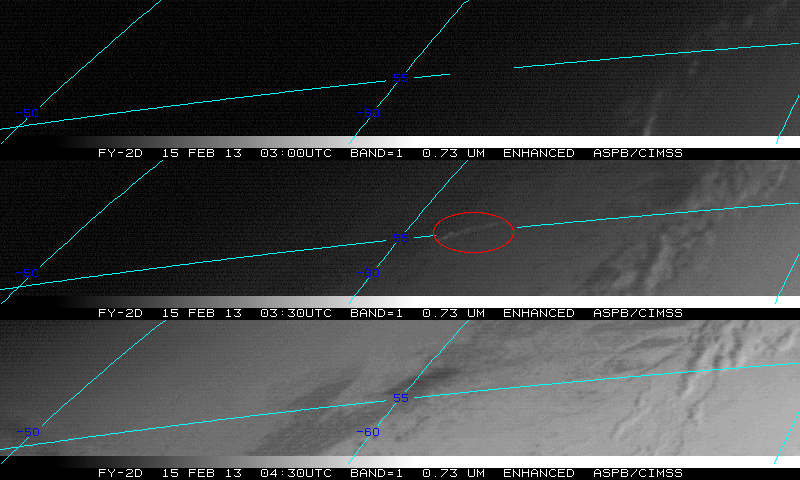Satellite Views of Meteor Vapor Trail Over Russia
A Meteor entered the Earth’s atmosphere over the Ural Mountains of western Russia today at approximately 0320 UTC (09:20 AM local time). The visible image from just after sunrise, above, from the Chinese FY-2D satellite shows an east-west plume, likely from the meteor, near Chelyabinsk. Meteosat-9 also captured the event (YouTube | EUMETSAT), as did Meteosat-10.
FY-2D has multiple channels. An animation of the visible (0.73 µm), near-infrared (3.8 µm), ‘water vapor’ (6.8 µm) and far-infrared (11.0 µm) is shown above. The signature of the meteor vapor trail is present in each of the channels. A before/after comparison (03:00 and 03:30 UTC) of FY-2D 0.73 µm visible, 3.8 µm shortwave IR, 6.8 µm water vapor, and 10.8 µm IR window channel images is shown below.

Before/after comparison of FY-2D 0.73 µm visible, 3.8 µm shortwave IR, 6.8 µm water vapor, and 10.8 µm IR window channel images
An oblique view using Visible (0.73 µm) images from the Japanese MTSAT-2 satellite (below) revealed that the stratospheric component of the meteor vapor trail could be seen for as long as 9 hours with the aid of illumination from the sun.
A comparison of MTSAT-2 Shortwave Infrared (3.75 µm), Infrared Window (10.8 µm) and Visible (0.73 µm) images (below) showed that the meteor vapor trail exhibited a warm (darker gray) signature on the Shortwave Infrared images, due to this channel’s sensitivity to reflected solar radiation — that signature was seen to disappear with the loss of daytime sunlight. Since the vapor trail was not a particularly dense cloud, it did not exhibit a distinct signature on the Infrared Window images; however, there was still a faint thermal signal due to the fact that the mean meteor trail infrared brightness temperature of around 242 K (-31 ºC) was significantly warmer than that of the background infrared brightness temperature of space (165 K or -108 ºC).MTSAT-2 Shortwave Infrared (3.75 µm, top), Infrared Window (10.8 µm, middle) and Visible (0.73 µm, bottom) images (credit: Scott Bachmeier, CIMSS) [click to play animation]


